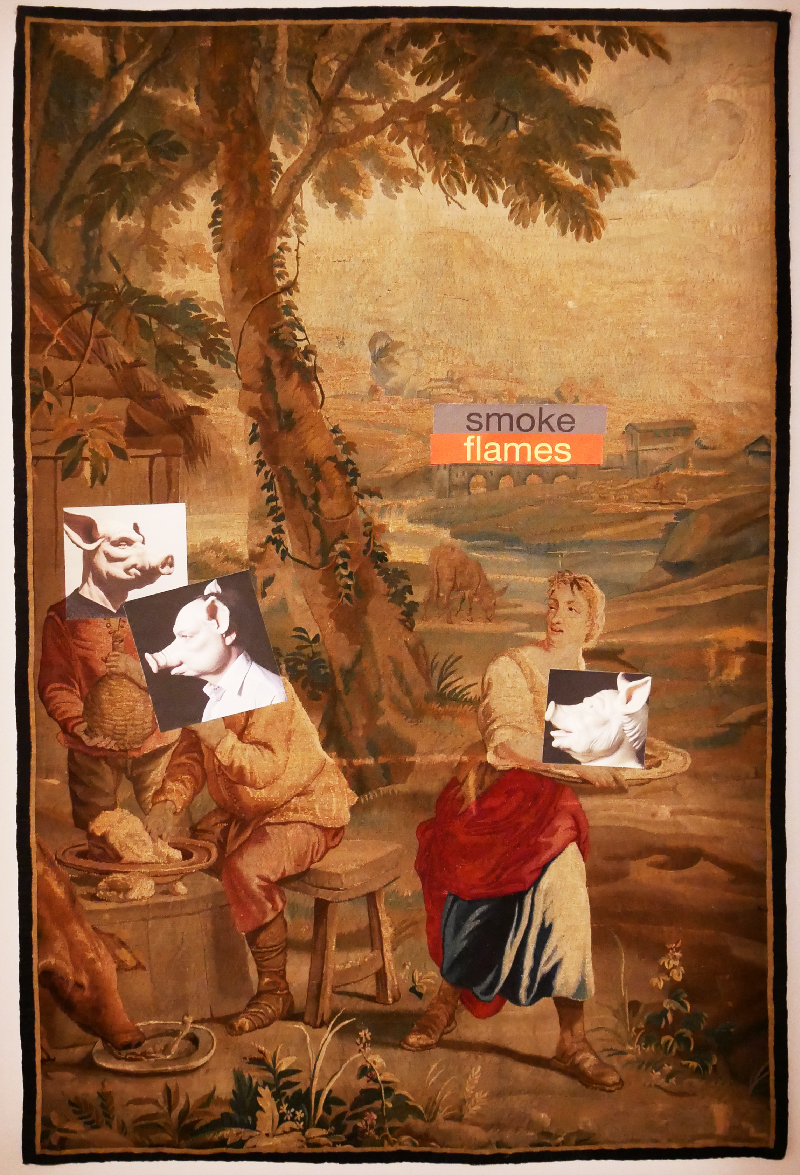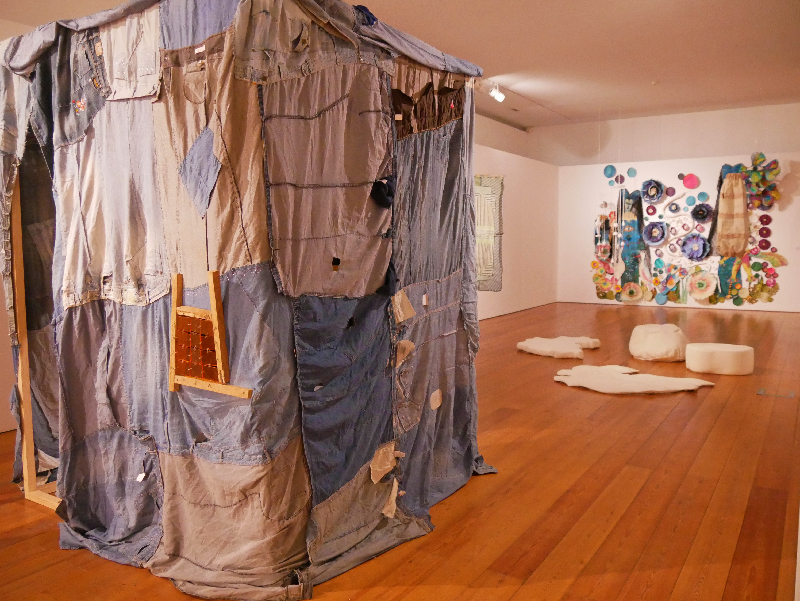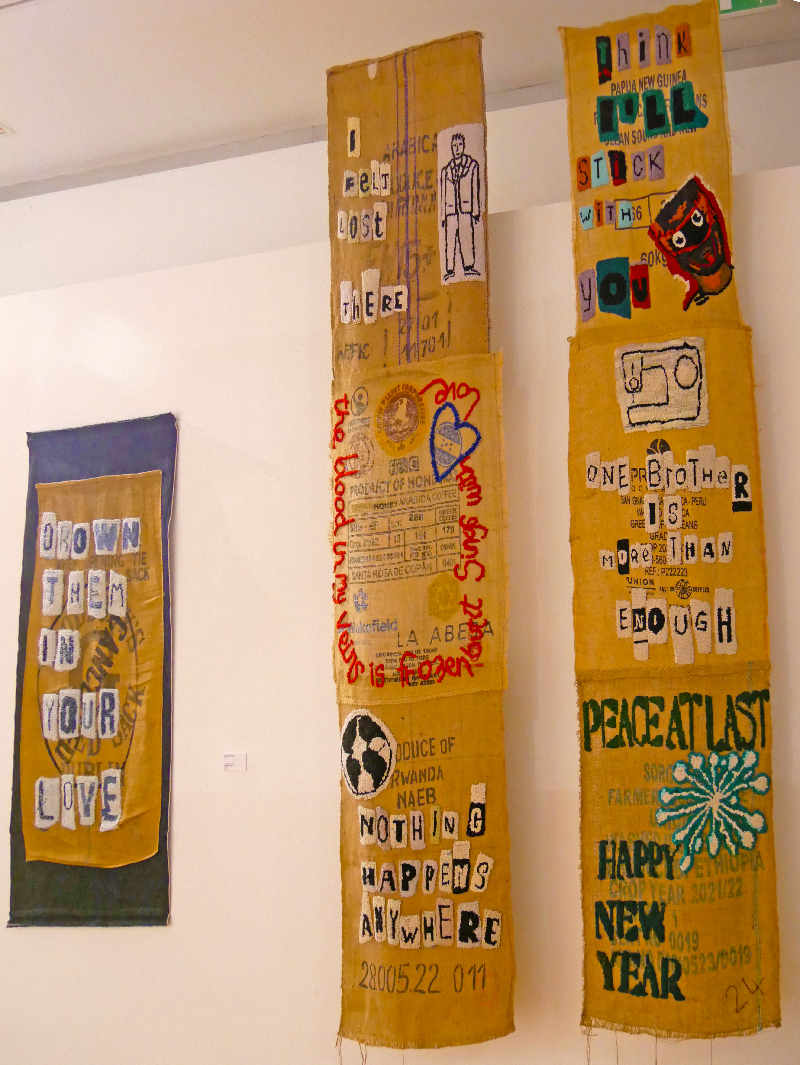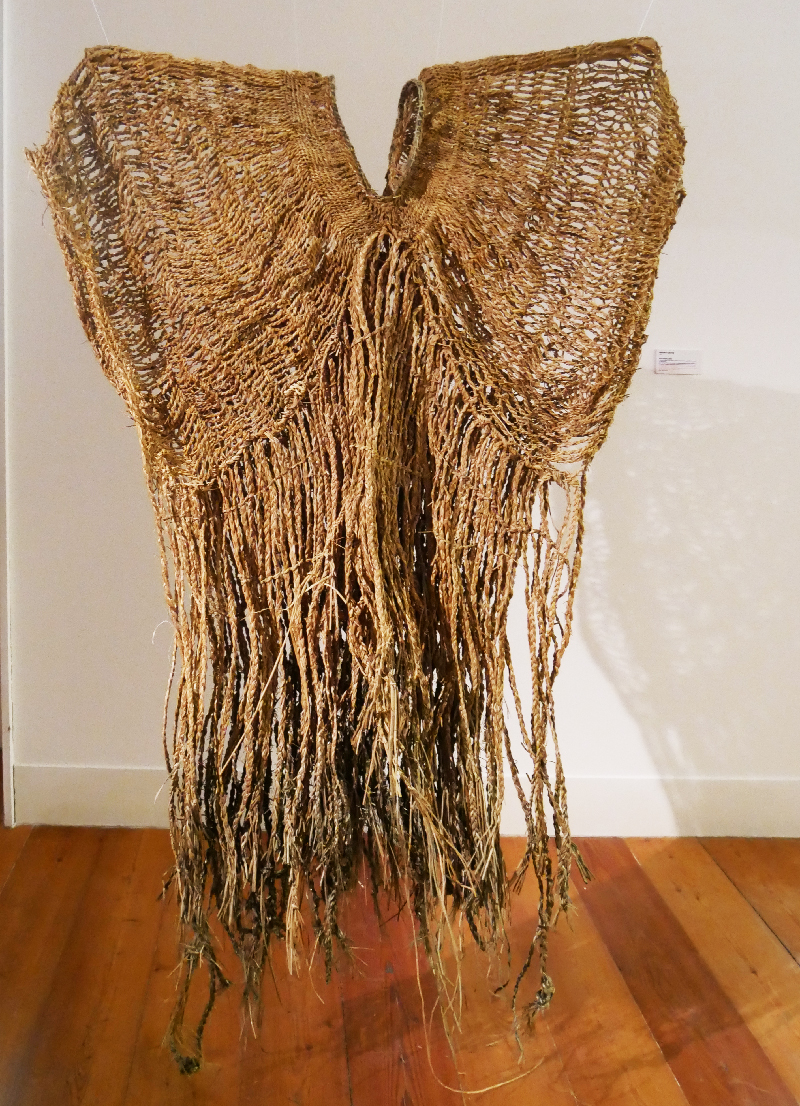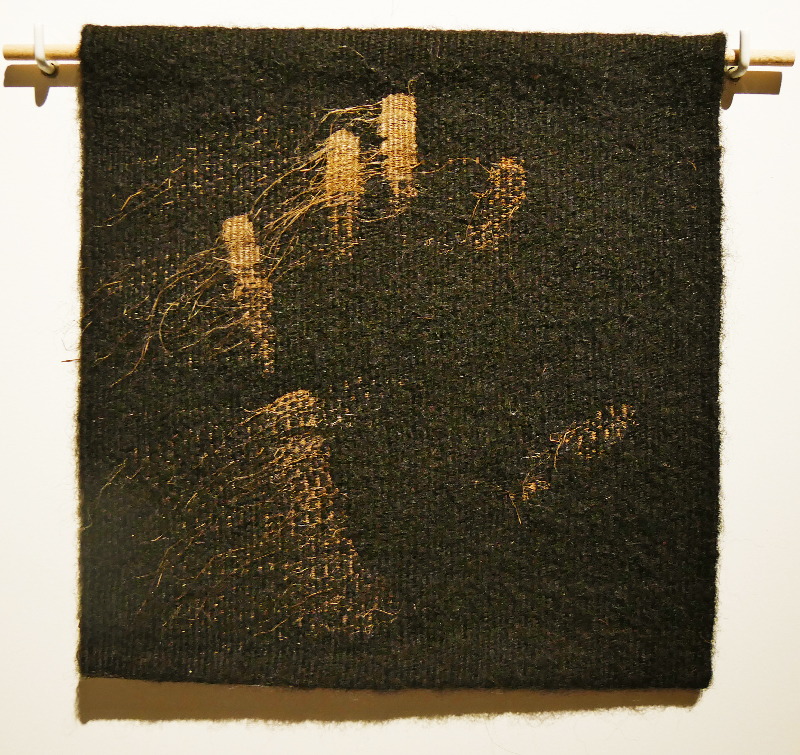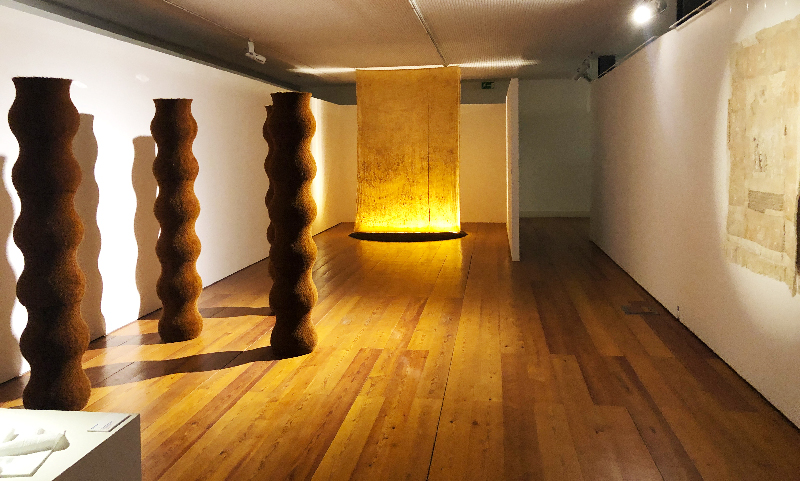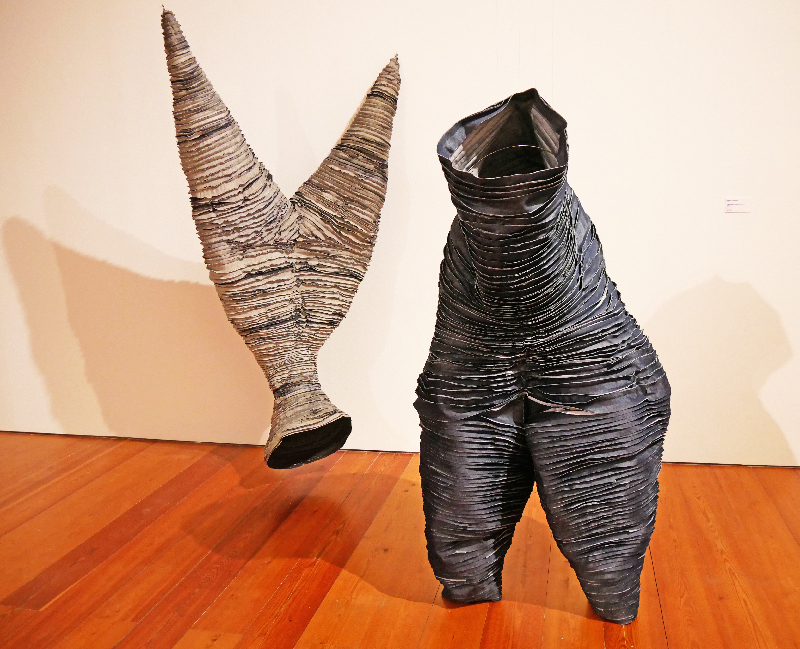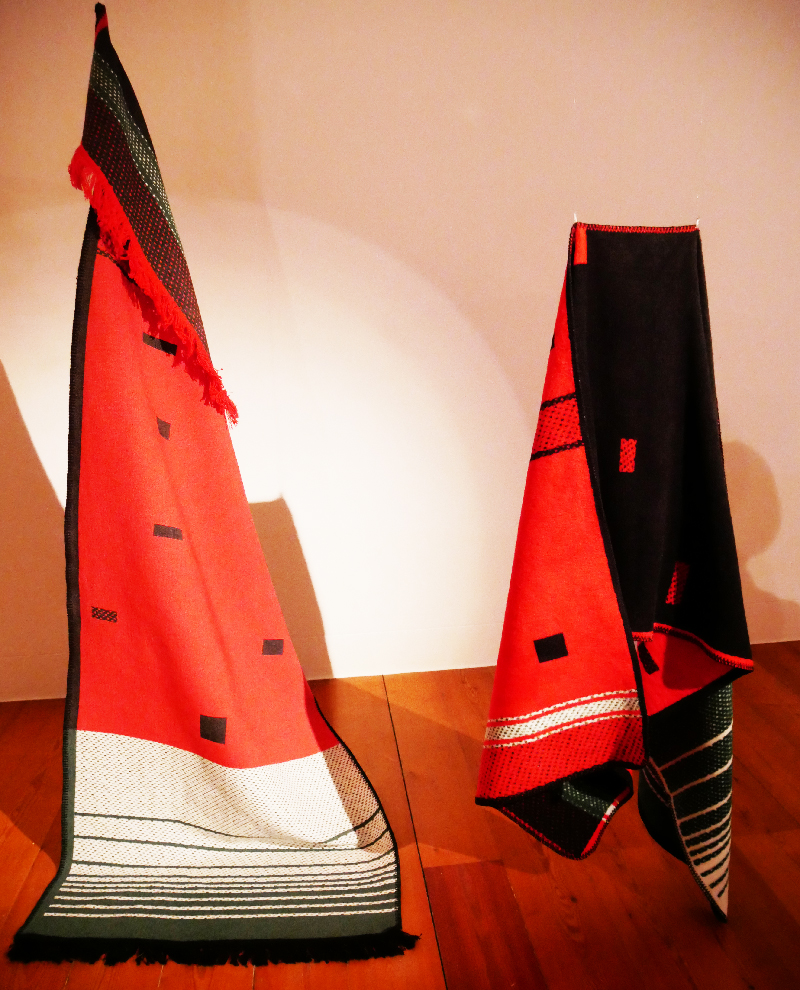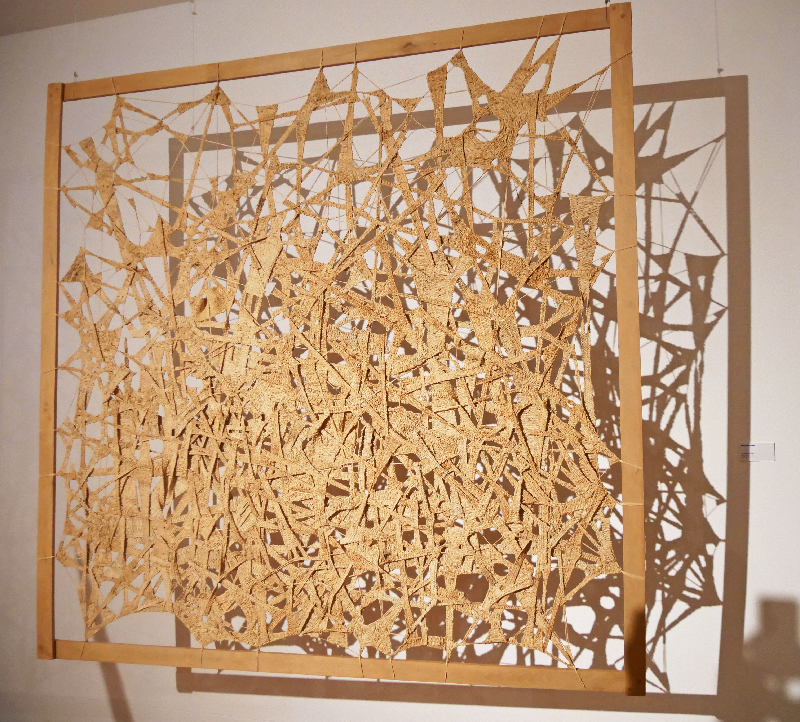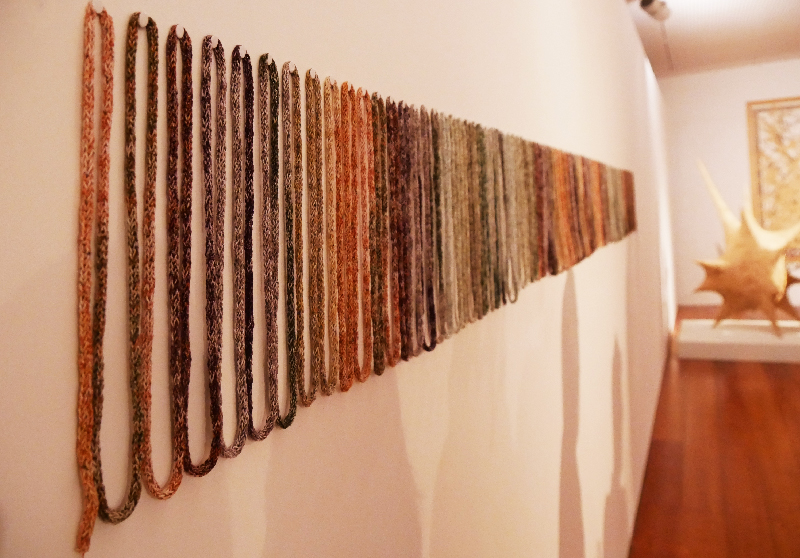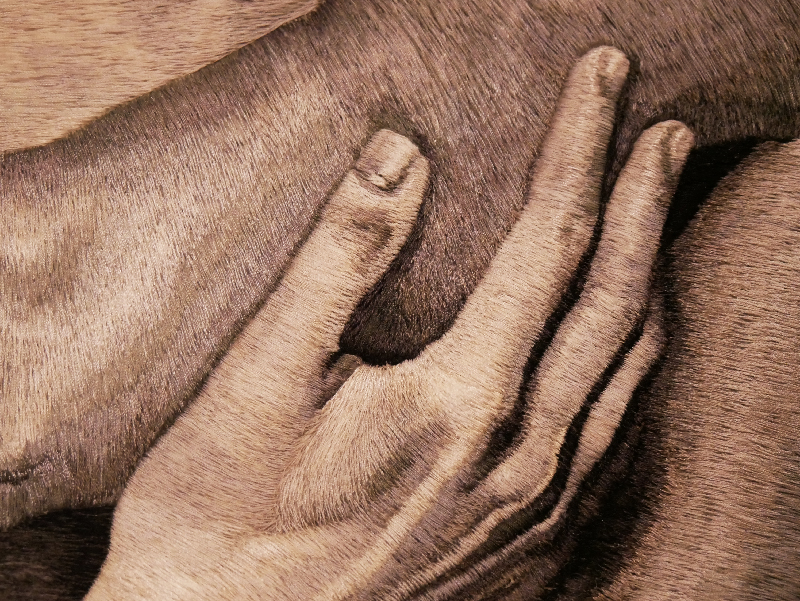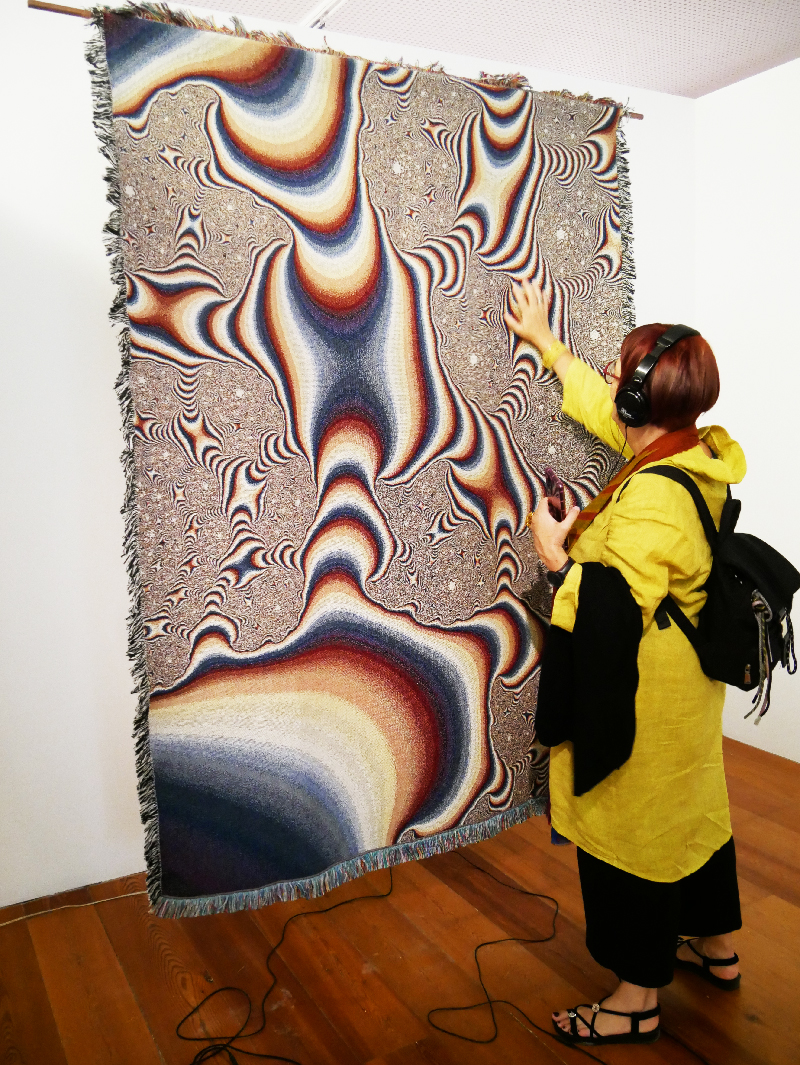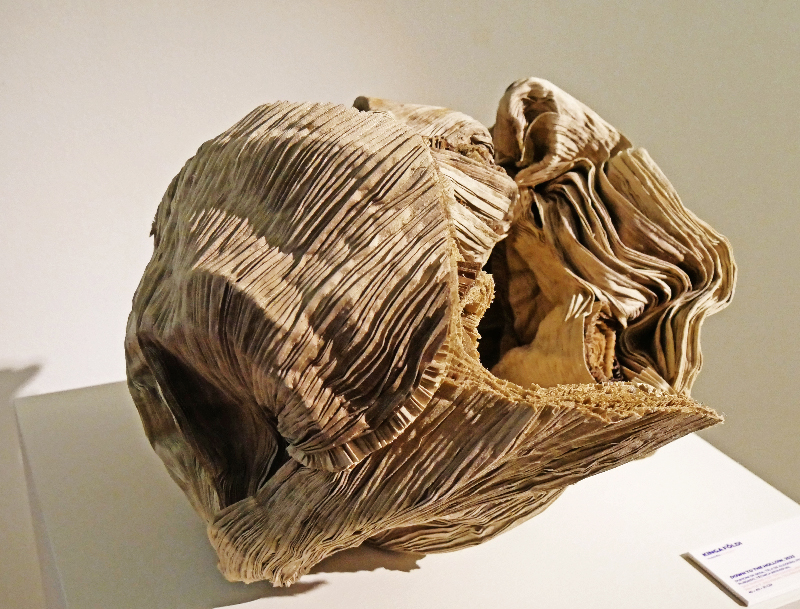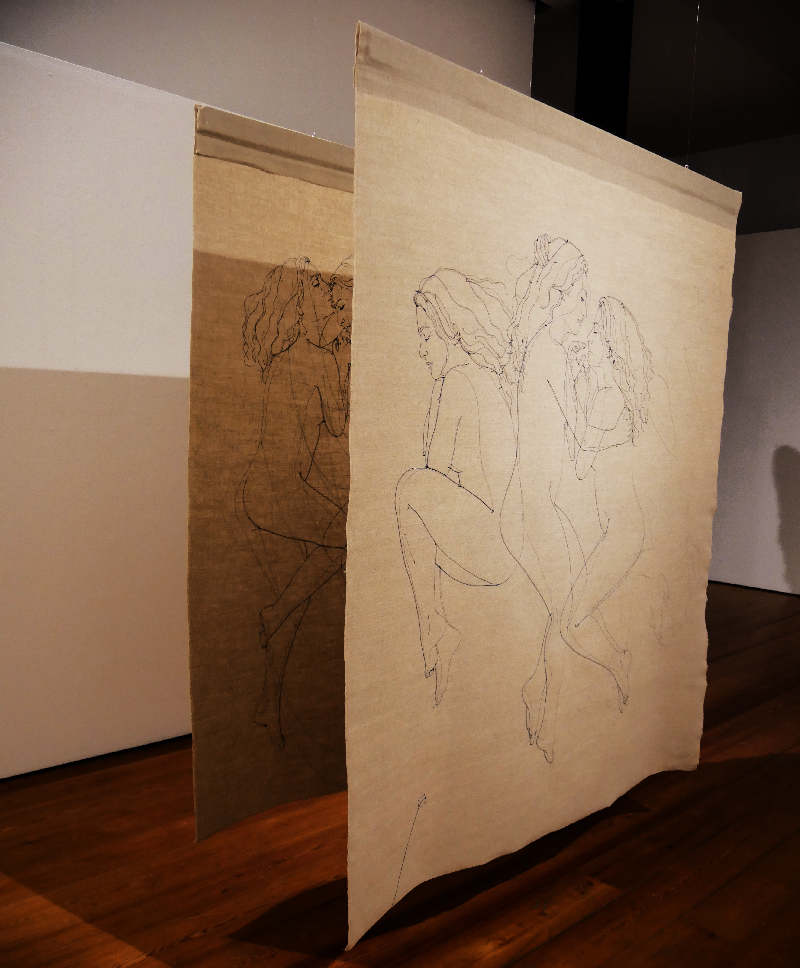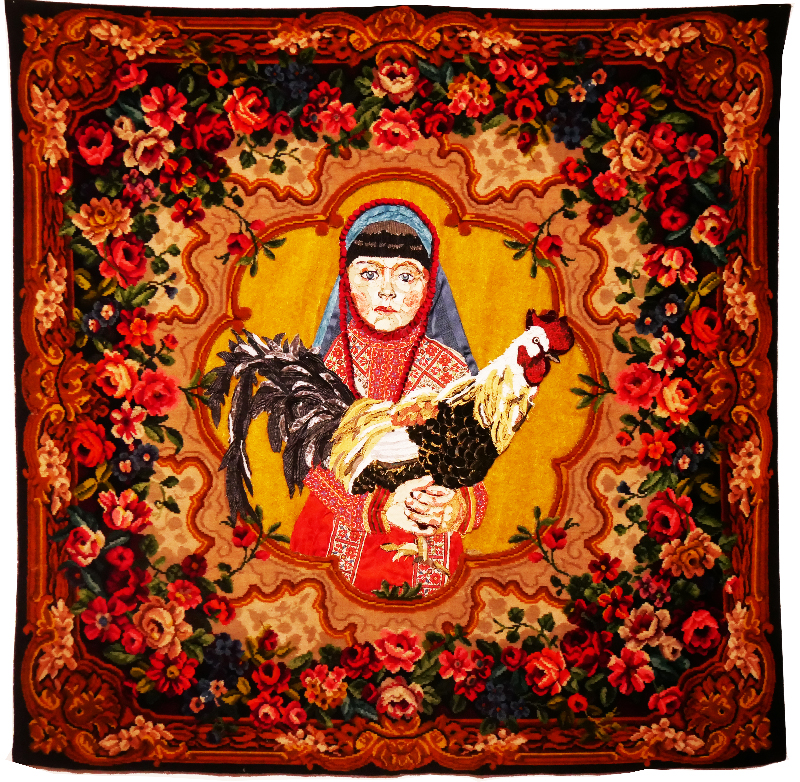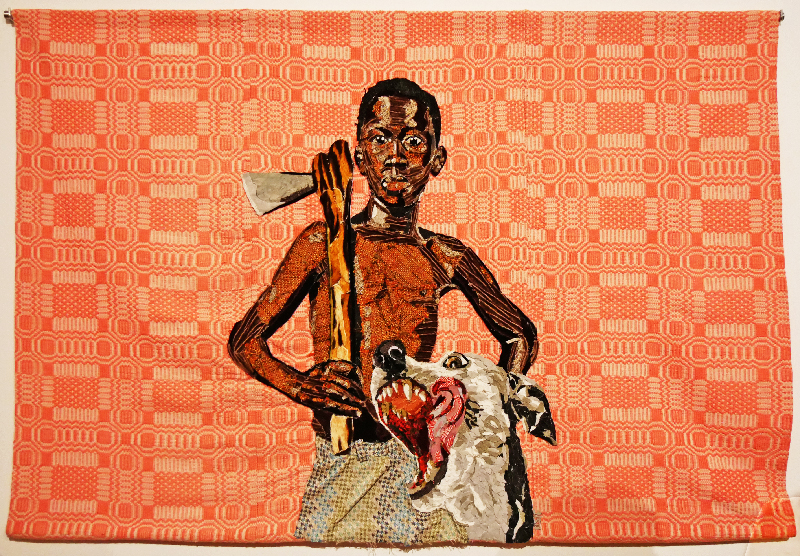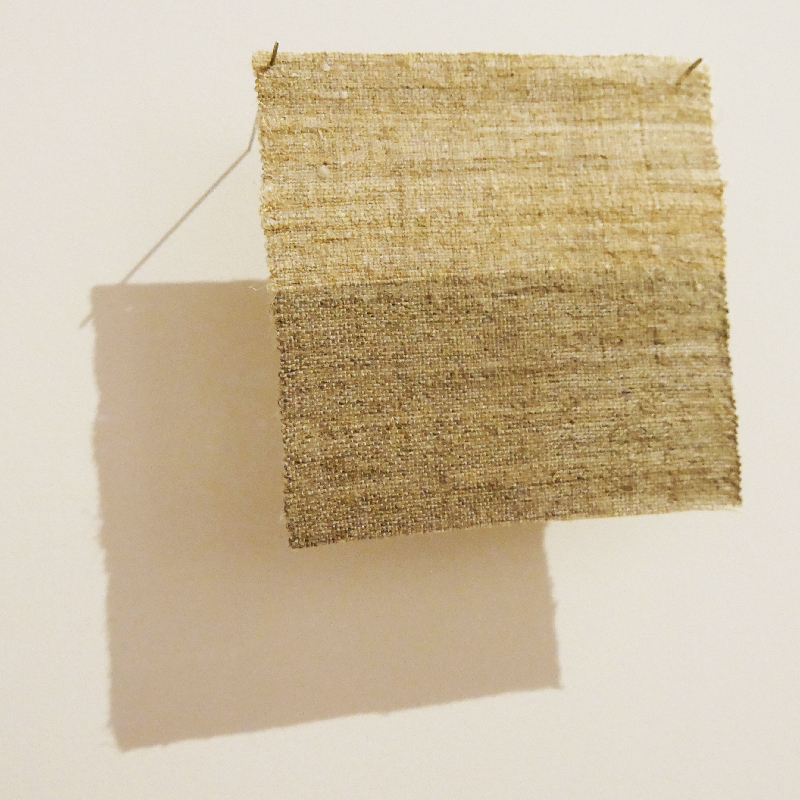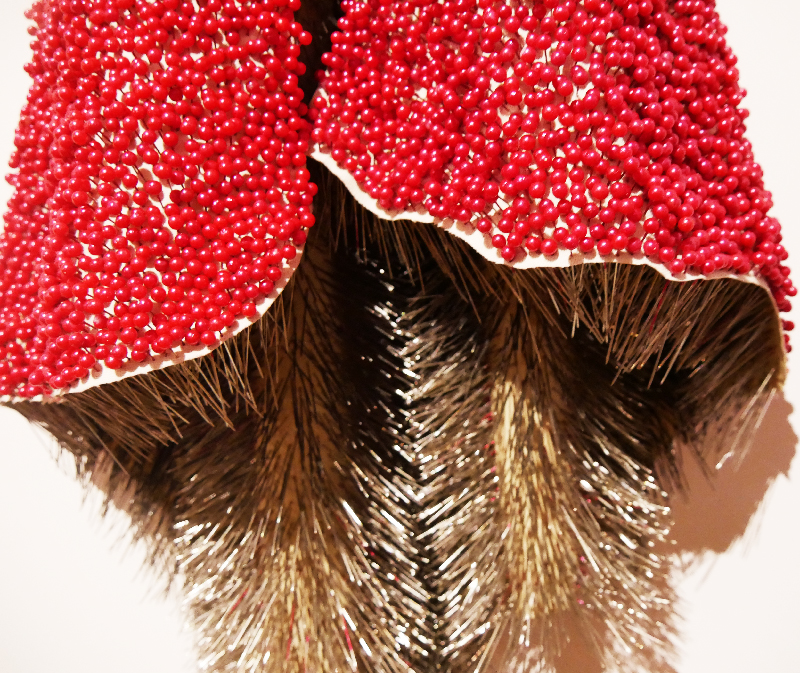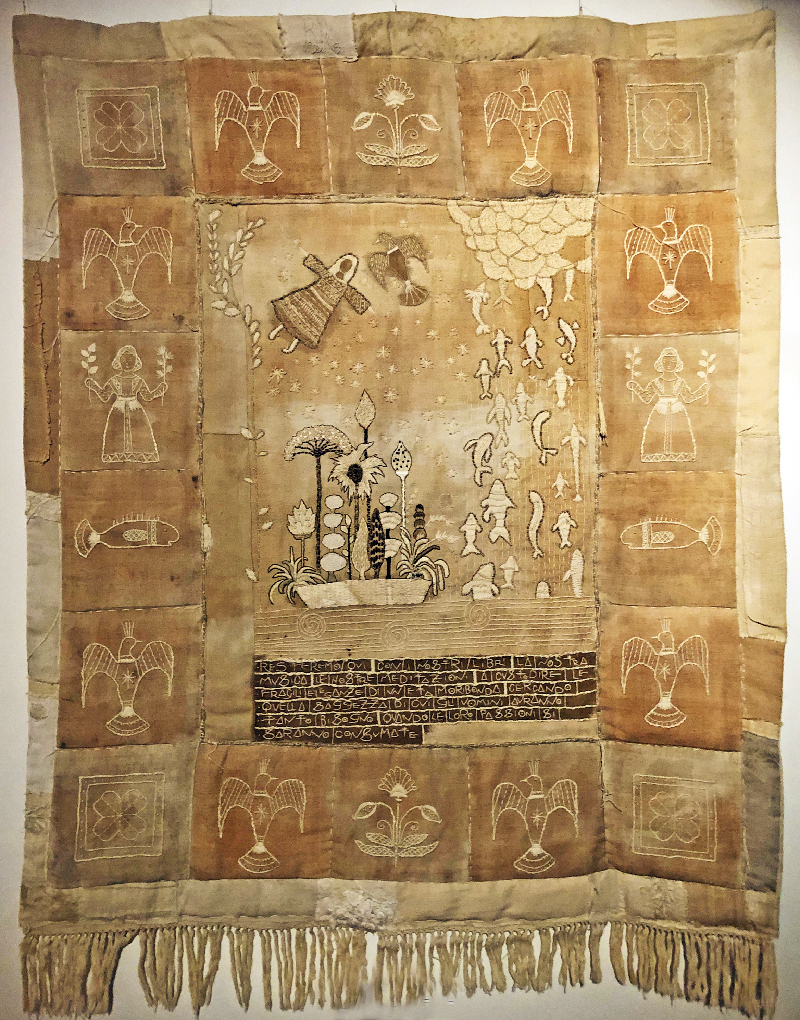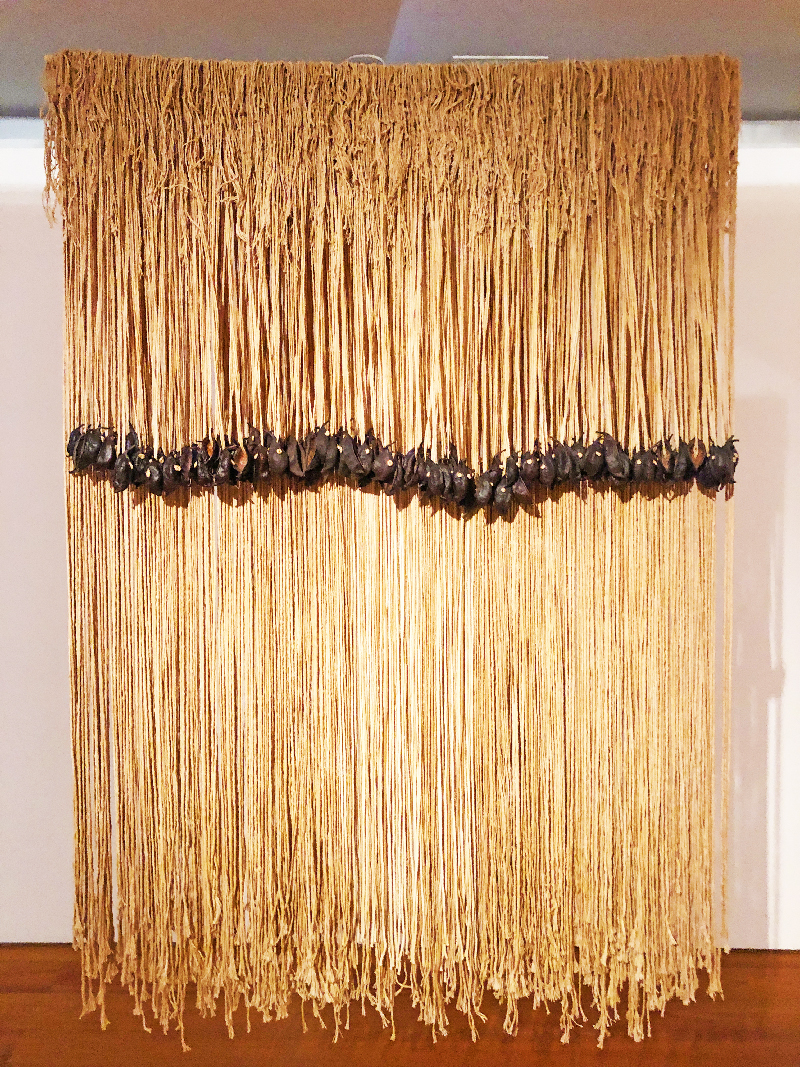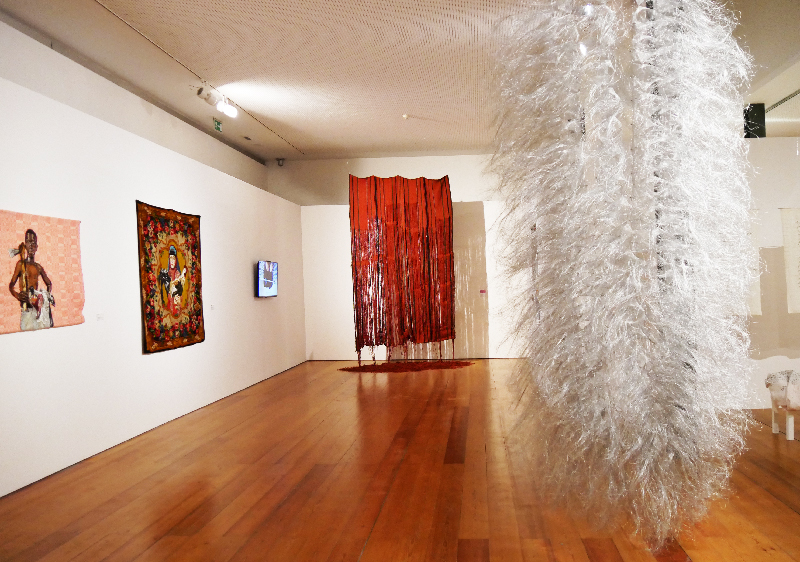
Contextile 7, part1
The international exhibition Contextile is taking place in Guimaraes , Portugal from 7 September to15 December 2024. The opening event was accompanied by a series of further exhibitions, among others from the guest country Canada, from the artistic residencies, together with a conference day and workshops.
In this first part I will discuss the International exhibition that was having its 7th edition this year. This exhibition is the core of the biennials programming, bringing together creators from dozens of countries and exploring the diversity of contemporary creation in textile art. I consider this event to be one of the most important events in the field of textile art these days, certainly as important as the older Lodz International Triennial of Tapestry. The theme for this exhibition was „Touch“, a very relevant theme in the light of artificial intelligence and digital reality versus the importance of the sense of touch.
The works in the exhibition showed many variations from „material touch“ to „staying in touch“. There were 1300 artists who submitted 1.505 artworks for Contextile 7. Chosen by the jury were 57 works by 50 artists from 29 countries. The jury was made up of 4 well-known textile art experts, Janis jefferies/UK, Cláudia Melo/Portugal, Lala de Dios/Spain and Magda Sobon/Poland together with a member of the organizational team, Cindy Steller/USA. Their choice was at first a bit surprising to me, as I had hoped for a more textile art based selection. But what they had done was choosing the diversity of textile art these days with many fine artists now using the textile medium in new and unexpected ways. Also it seemed to me that the jury did not want to choose artists that had been shown in recent Contextile exhibitions, and were looking for new names of upcoming artists. Unfortunately the year of birth was not marked in the catalogue, but it looked like a lot of younger artists were selected.
The artists in the exhibition came from Europe: Portugal and Hungary each 6, Italy 4, Poland and Spain each 3, Germany, Greece and Lithuania each 2, Croatia, Cyprus, Finland, France, Netherlands, Norway and UK one each; from The Americas: USA (2), Canada (1), Brazil(1), Cape Verde(1), Chile (2), Mexico (1), Peru (2), Venezuela (1) and other continents:Australia (1), India (1), Taiwan (1), Ghana (1), Palestine (1).
The techniques employed were weaving (17 including 3 Jacquard- and two tapestry-weavings), some 10 three dimensional sculptures, about 9 embroideries, 4 artists used braiding, 3 knitting, and 3 assemblages, 2 patchwork and 2 fabric painting, 1 screen-print and further some combinations of techniques.
There were three prizes, all in the sphere of weaving; an Akquisition Prize was awarded to Anna ill from Spain who used weaving to explore ideas of vulnerability and protection in „Embracing Limits“. In „Weaving Horizons“ she uses textiles to depict the memory of the absent body. Her weaving was very subtile and used as a metaphor.
Maaike Gottschall from the Netherlands received a Honorable Mention. She was using weaving in her „Kitty van der Mijll-Decker Heritage Project“ an ongoing loom installation, that started in 2019, with multiple works based on the work of this Bauhaus weaver, who had been a teacher at the Rietveld Academy in Amsterdam. Among other materials she worked with hand-grown and hand-spun flax from the estate of the Dutch Bauhaus mill Kitty van der Mijll-Decker.A further Honorable Mention was awarded to Lara Salous from Palestine for her film „Around Their Hands“ and the un-woven work „What Remains“. At first I did not understand this choice because I did not take the time to see the film properly. It was the film that convinced the jury about touch in the sense of „staying in touch“ with the older generation. Asked if there was a political statement behind this choice, one jury-member said “Of course one cannot mention the name Palestine without being political, but that was not the intention of the jury“
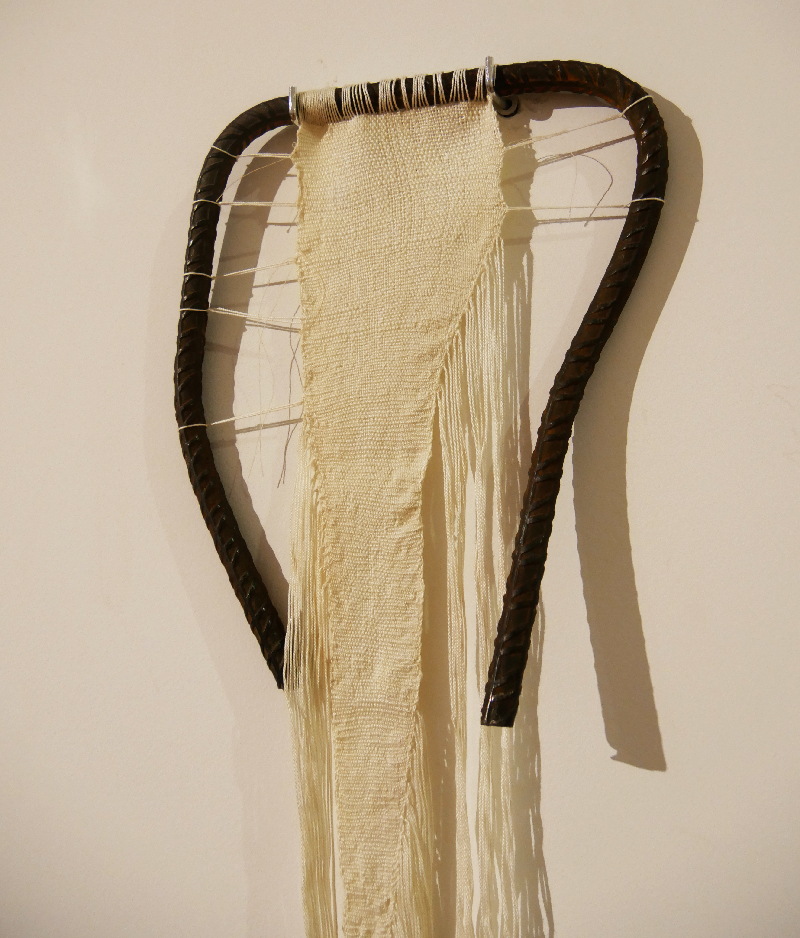
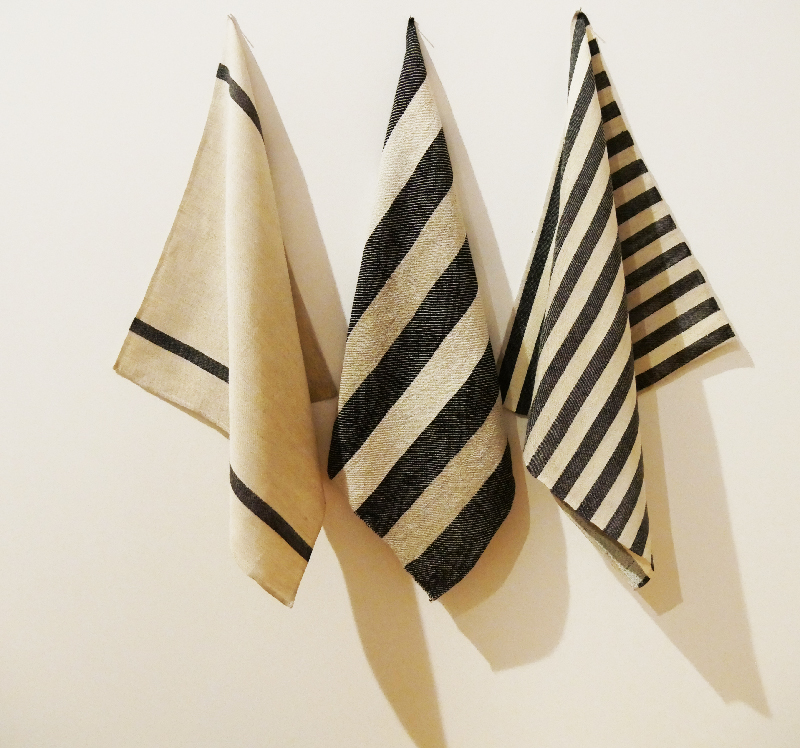
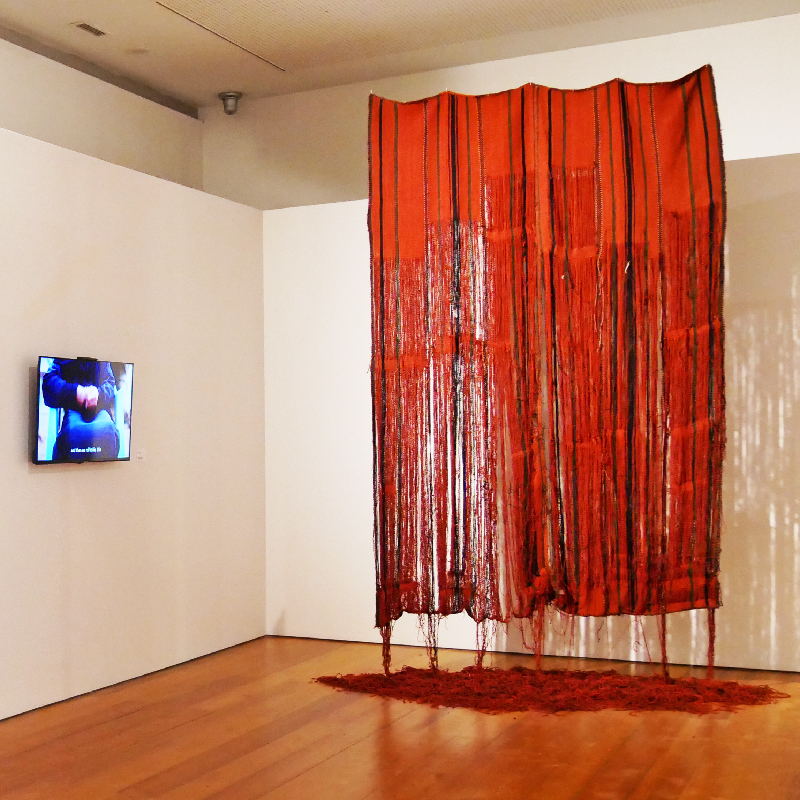
In addition to the prizes I was very much impressed by the work „Inexpressible II“ of Katrīna Leitēna from Latvia, a fine photo-realistic embroidery expressing emotions and feelings. She graduated in 2019 at the Art Academy of Latvia.Than I also liked very much the tapestries „Touch“ by Emilia Cecylia Domańska, who is known from the Lodz Tapestry Triennial, I found them just perfect! Furthermore I was positively surprised by the industrial felted figures by Loreta Švaikauskienė from Lithuania, who finished her Master of Art in 2000 at the Vilnius Academy of Art, Kaunas Faculty. And finally I really liked the work „Touch Mei“ by Anna Lima-Netto from Portugal, a textile sculpture to which she added words by Chaplin:“ We don’t need machines without humanity“. She sees her work as a reflection on and a counterpart to contemporary society.
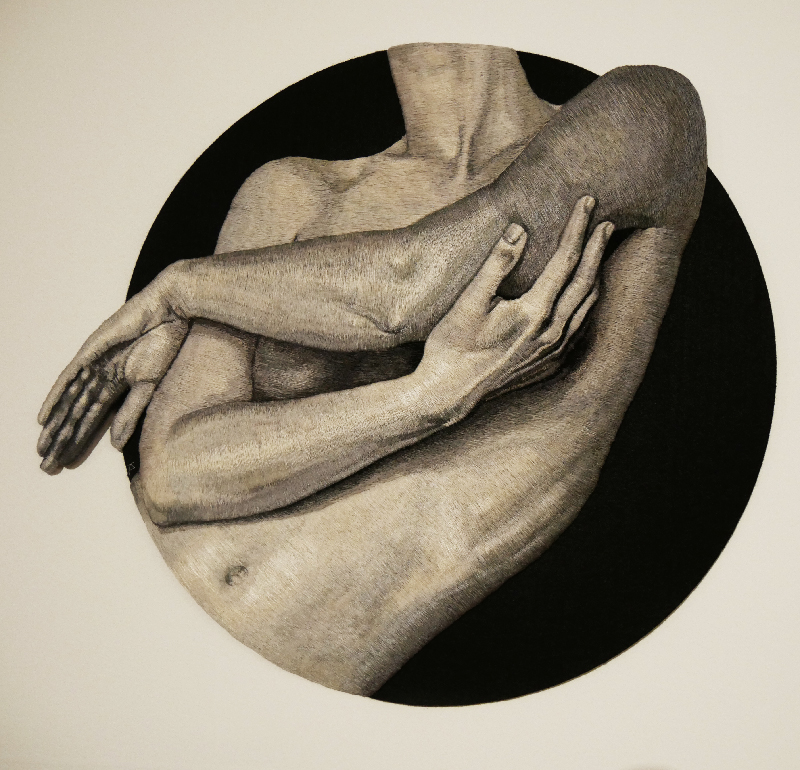
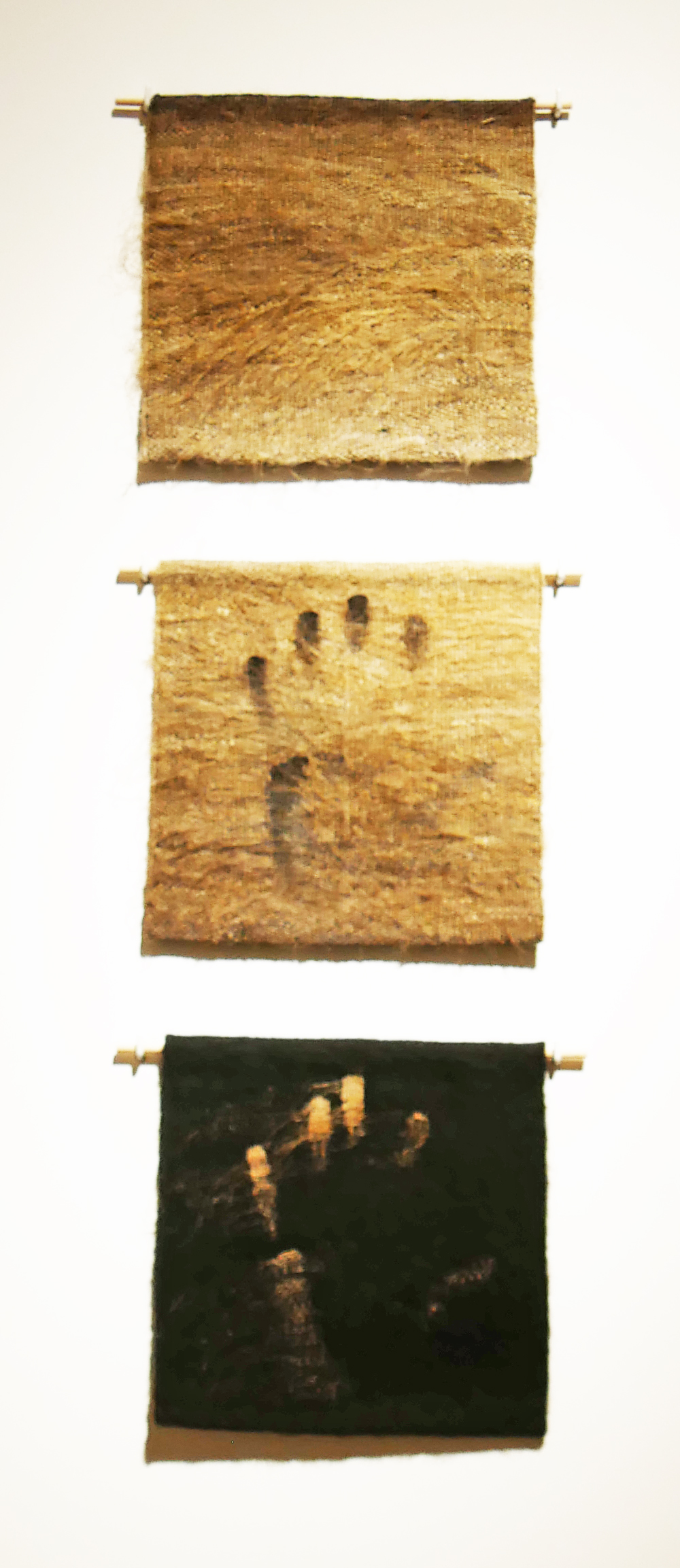
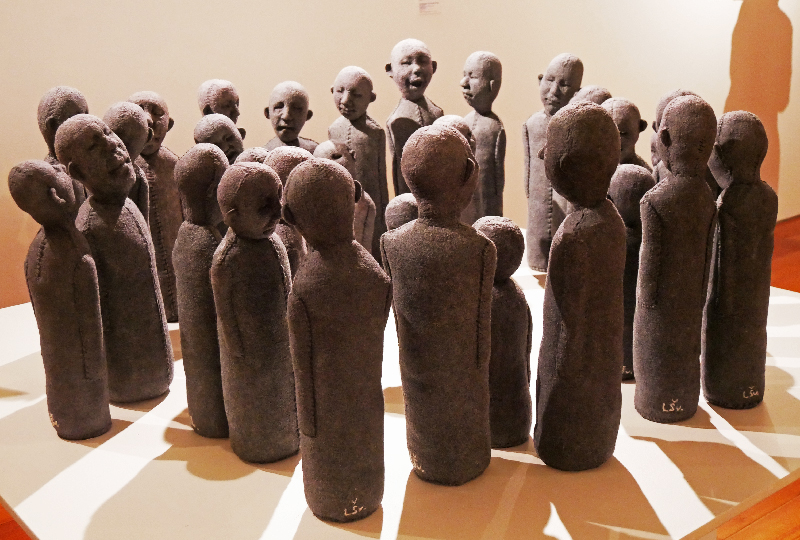
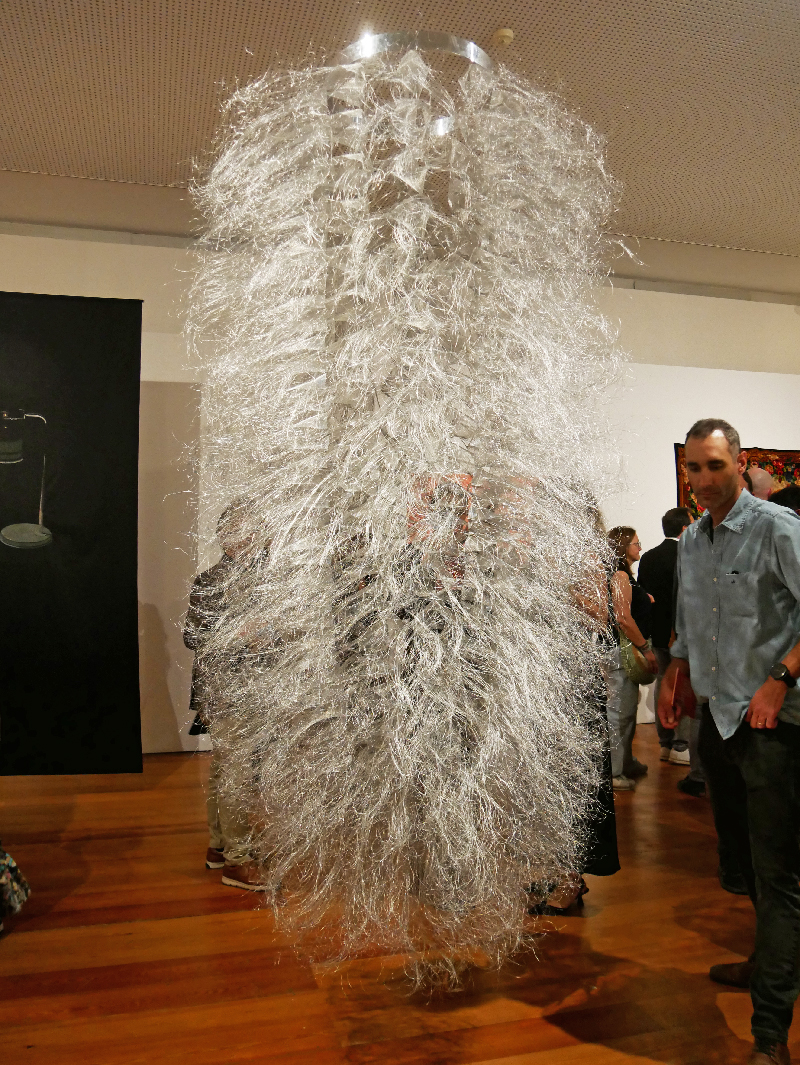
I saw some works that I had recently admired in other international exhibitions, like the work „Talking Hands“ by Niina Hiltunen from Finland, earlier shown at the Riga International Textile and Fiber Art Triennial in 2023. Than the touching homage to her father by Eli Eines from Norway „A Hole in the Heart“, that was also shown at the International Tapestry Triennial of Lodz in 2022. Finally there was a work quite similar to „Manto Sensorial“ made by Consuela Walker Guzmán from Chile at the Biennale of Contemporary Art, WTA, in Madrid, 2019. I did not mind seeing these works again, as they were excellent, but it probably was intended to show new works?
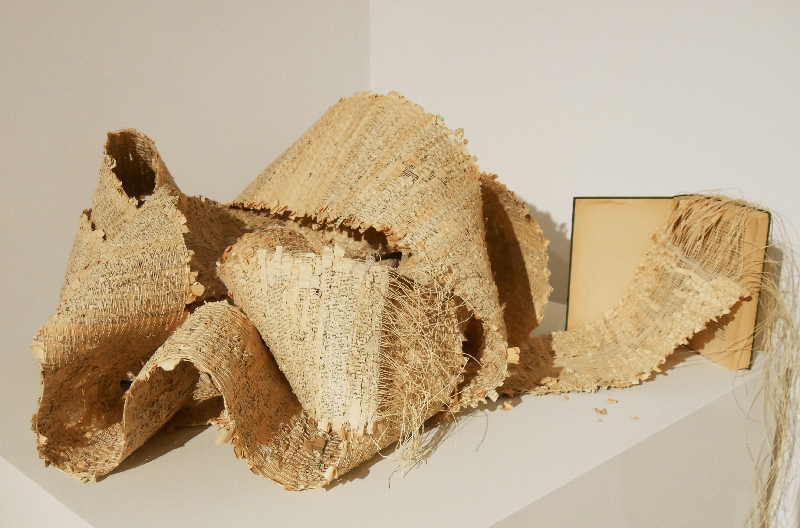
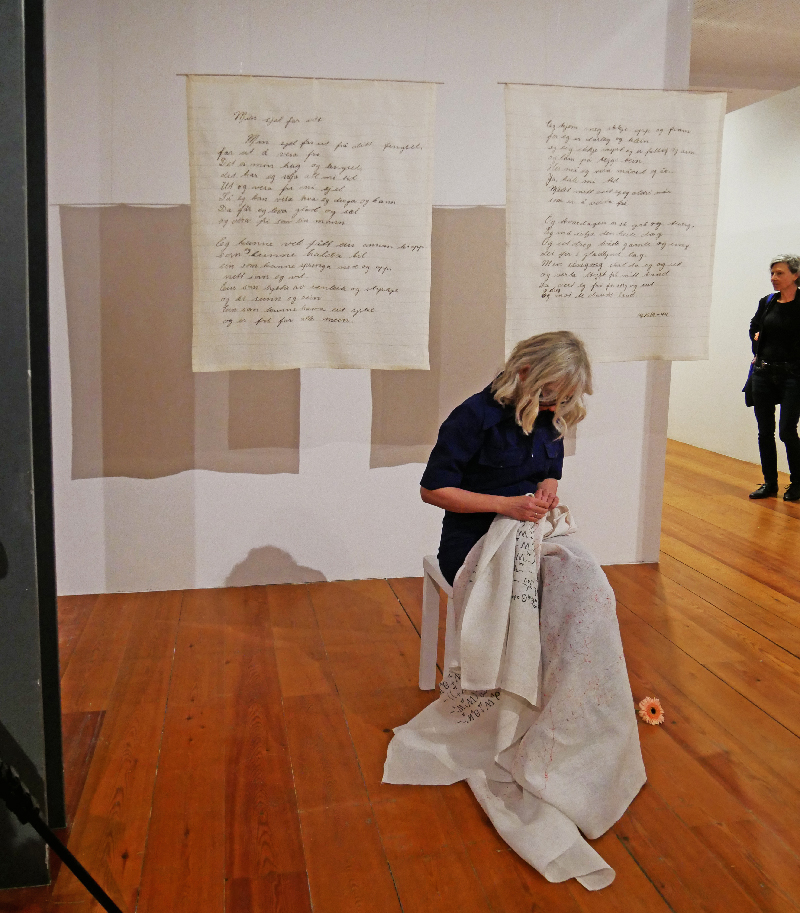
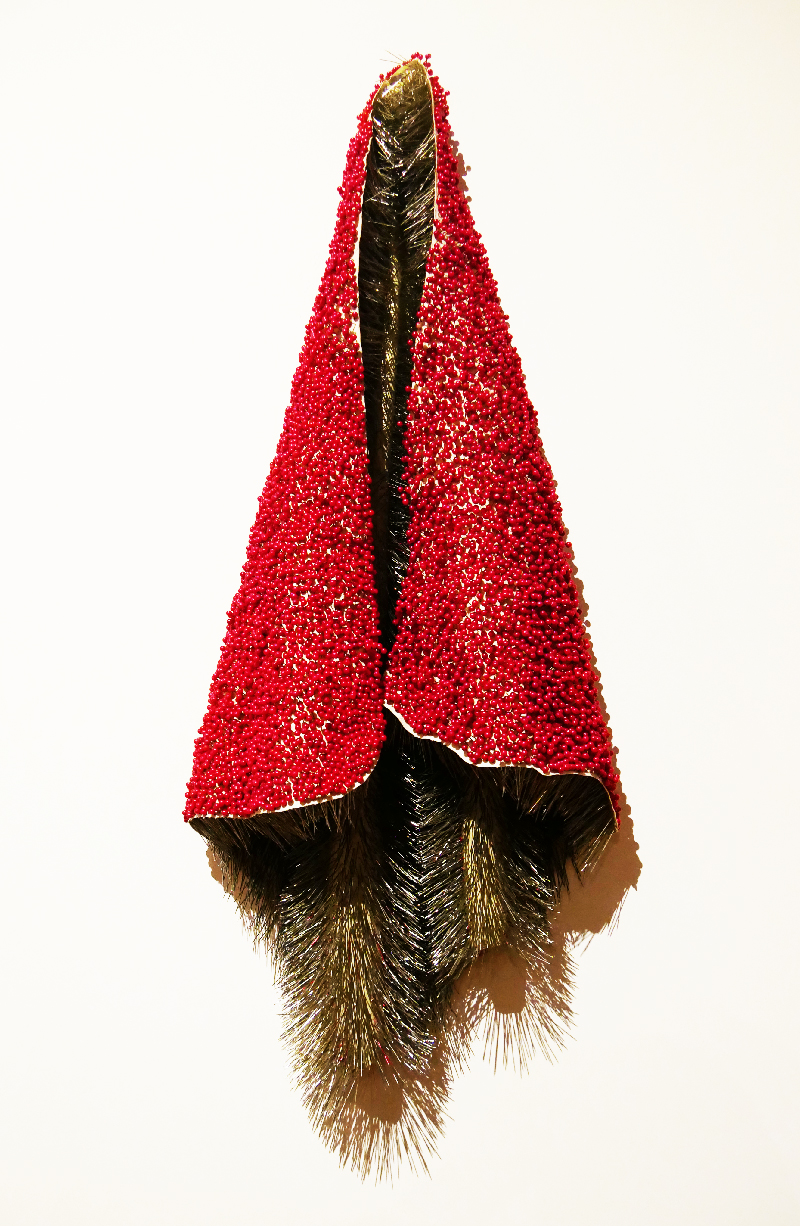
Some of the more fine art oriented works were not what I was looking for, even though they were funny and lighthearted. Here I refer to the French artist Arnaud Cohens „Winter Over Europe 7, Circe“, a traditional Belgium gobelin with KI pictures as an assemblage. Than Carlos Bautista Biernnay from the USA with his work“Chaos“, that I found really chaotic! Frederick Bamfo from Ghana had created a „Floating House“ out of denim clothes, an installation that looked to me like a first-years student work. Finally Graham Hollick, UK who had send a collaborative work he made together with two other artists. His work presented his interpretation of the phrases he was sent like „Drown them in your love“. I was overhearing him saying how surprised he was that he got accepted in the exhibition. That maybe due to the jury’s appetite for diversity as his work was funny and unique (but not more than that in my opinion)!
All in all I was very happy that I made it to Guimaraes this time again and could see works of so many artists that I had not known before! In a further article I will show among others the work of the guest country, Canada and the surprising Josep Grau-Garriga exhibition „Los Hilos de la Memoria“.
